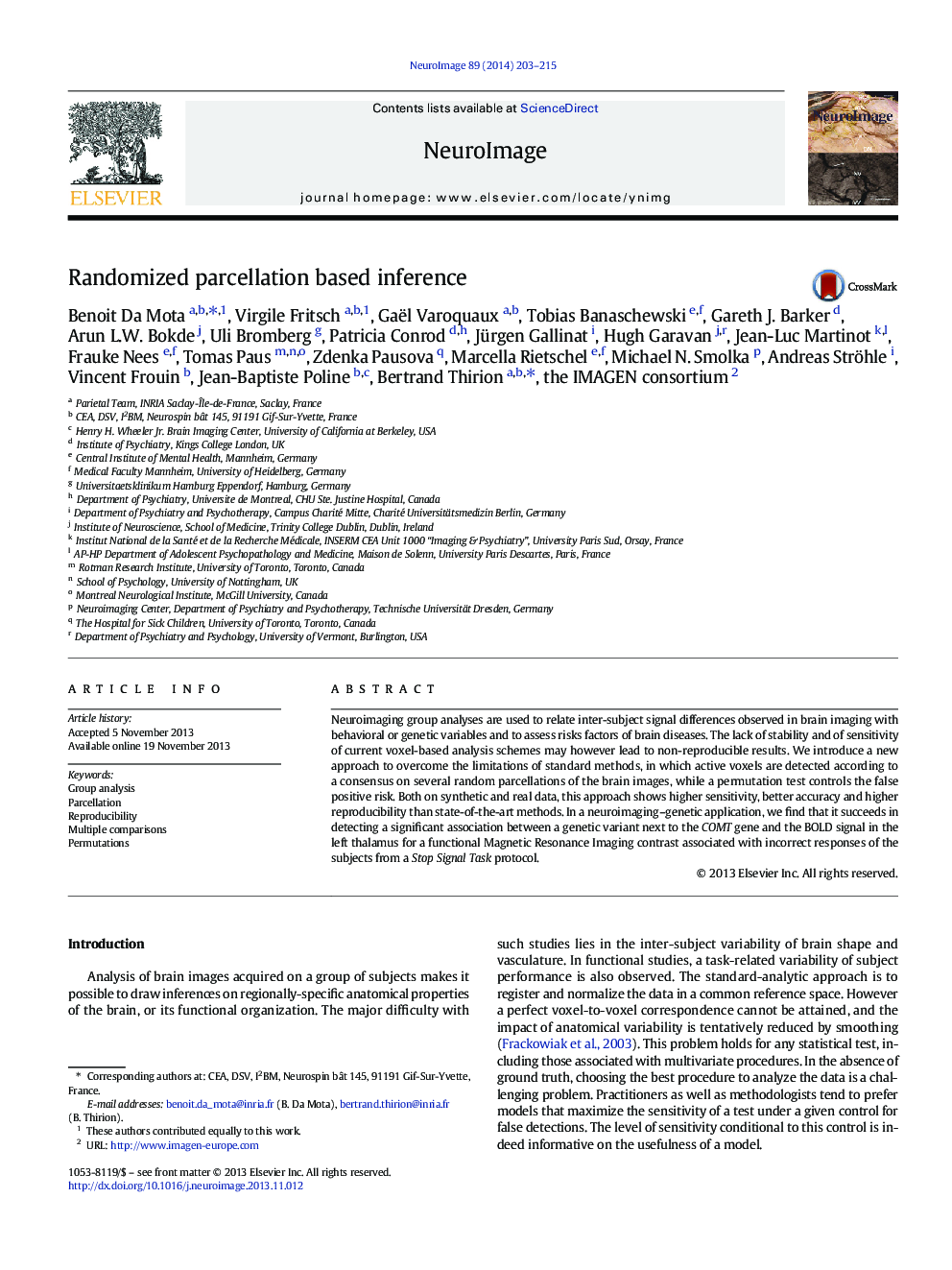| Article ID | Journal | Published Year | Pages | File Type |
|---|---|---|---|---|
| 6028005 | NeuroImage | 2014 | 13 Pages |
Abstract
Neuroimaging group analyses are used to relate inter-subject signal differences observed in brain imaging with behavioral or genetic variables and to assess risks factors of brain diseases. The lack of stability and of sensitivity of current voxel-based analysis schemes may however lead to non-reproducible results. We introduce a new approach to overcome the limitations of standard methods, in which active voxels are detected according to a consensus on several random parcellations of the brain images, while a permutation test controls the false positive risk. Both on synthetic and real data, this approach shows higher sensitivity, better accuracy and higher reproducibility than state-of-the-art methods. In a neuroimaging-genetic application, we find that it succeeds in detecting a significant association between a genetic variant next to the COMT gene and the BOLD signal in the left thalamus for a functional Magnetic Resonance Imaging contrast associated with incorrect responses of the subjects from a Stop Signal Task protocol.
Related Topics
Life Sciences
Neuroscience
Cognitive Neuroscience
Authors
Benoit Da Mota, Virgile Fritsch, Gaël Varoquaux, Tobias Banaschewski, Gareth J. Barker, Arun L.W. Bokde, Uli Bromberg, Patricia Conrod, Jürgen Gallinat, Hugh Garavan, Jean-Luc Martinot, Frauke Nees, Tomas Paus, Zdenka Pausova, Marcella Rietschel,
